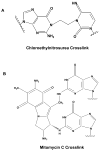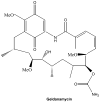Helicases as prospective targets for anti-cancer therapy
- PMID: 18473724
- PMCID: PMC2564855
- DOI: 10.2174/187152008784220339
Helicases as prospective targets for anti-cancer therapy
Abstract
It has been proposed that selective inactivation of a DNA repair pathway may enhance anti-cancer therapies that eliminate cancerous cells through the cytotoxic effects of DNA damaging agents or radiation. Given the unique and critically important roles of DNA helicases in the DNA damage response, DNA repair, and maintenance of genomic stability, a number of strategies currently being explored or in use to combat cancer may be either mediated or enhanced through the modulation of helicase function. The focus of this review will be to examine the roles of helicases in DNA repair that might be suitably targeted by cancer therapeutic approaches. Treatment of cancers with anti-cancer drugs such as small molecule compounds that modulate helicase expression or function is a viable approach to selectively kill cancer cells through the inactivation of helicase-dependent DNA repair pathways, particularly those associated with DNA recombination, replication restart, and cell cycle checkpoint.
Figures







References
Publication types
MeSH terms
Substances
Grants and funding
LinkOut - more resources
Full Text Sources

